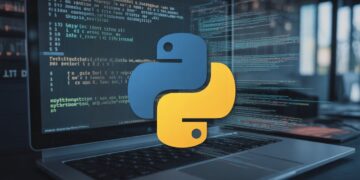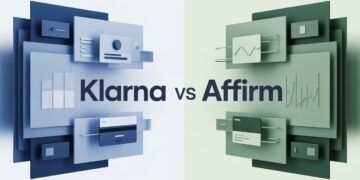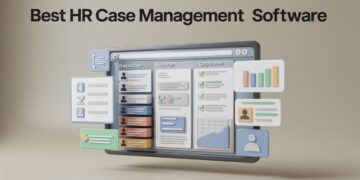Most design teams know this story by heart. The project needs visuals. Designer searches stock sites for three hours. Finds something “good enough.” Download it. Realizes it’s the wrong color, wrong style, wrong everything. Starts over. Eventually settles for mediocre because deadlines won’t wait.
Meanwhile, illustration platforms keep promising to fix everything with more content, better search, and premium features. That’s like solving traffic jams by building more parking lots and missing the real problem entirely.
Icons8’s Ouch understands what’s broken and fixes it. Instead of adding to the noise, they rebuilt how illustrations should work in modern design workflows.
What’s Wrong With Current Illustration Systems
Traditional stock libraries work like vintage clothing stores. What you see is what you get. Need it in blue instead of red? Tough luck. Want the character facing left instead of right? Keep looking.
This rigid approach kills creativity and wastes time. Projects are often shaped around available assets, rather than assets being tailored to meet project needs. Brand guidelines become suggestions because finding matching illustrations is nearly impossible.
The root problem: Illustrations are treated as finished goods rather than flexible design components. When you can’t customize what you download, your creative options get limited by whatever happens to exist in stock databases.
Ouch eliminates these constraints by building illustrations like Lego sets. Every image consists of separate, editable pieces. Characters exist independently from backgrounds. Objects move around freely. Colors change across everything that should match.
This modular approach puts creative control back where it belongs—with the creator. Visual elements serve your vision instead of dictating it. Project requirements drive customization instead of being compromised for inventory limitations.
The technical foundation supports real flexibility. SVG files maintain their structure when edited. PNG exports include transparency automatically. Animation formats load fast without crashing browsers. File sizes stay optimized so websites don’t slow down to a crawl.
Real-World Applications That Work
Development Teams: Visual Assets That Don’t Break Workflows
Every developer recognizes this scenario: the design team delivers mockups featuring specific illustrations, you discover that those exact graphics don’t exist in any usable format, valuable development time gets wasted hunting alternatives, and the final implementation gets compromised to meet shipping deadlines.
This gap between design expectations and technical reality drains resources across the software industry. Projects face delays while teams scramble for workable assets—budgets balloon to cover last-minute custom work. Quality takes a hit to preserve launch dates.
Ouch bridges this disconnect through developer-friendly file organization. Clean SVG architecture that stays stable through modifications. Logical naming that supports automated asset management. Multiple export formats eliminate conversion headaches.
API integration transforms the entire workflow. Instead of manually downloading and organizing files, development teams pull illustrations directly into build processes. Visual assets get version control. Consistency across environments happens automatically.
Performance stays predictable, too. Files load quickly without quality degradation. Animations run smoothly across devices. Mobile users don’t suffer because someone chose the wrong format.
Marketing Operations: Content Velocity Without Quality Compromise
Marketing teams face impossible content demands. Social platforms reward frequent posting with engaging visuals. Email campaigns need compelling graphics. Blog content requires supporting imagery. Everything must stay on-brand while adapting to different formats.
Traditional solutions create production bottlenecks. Generic stock photos look identical to competitor content. Custom illustration work takes longer than campaign cycles. Brand consistency becomes impossible when visuals can’t adapt to platform requirements.
Ouch’s component system enables rapid content creation without brand sacrifice. Marketing teams start with brand-aligned base illustrations and customize them for Instagram stories, Twitter headers, email banners, and landing pages. Colors adapt instantly. Layouts rearrange for different aspect ratios.
Content production accelerates dramatically when visual iteration happens in real-time. Campaign concepts get validated immediately. Seasonal adjustments take minutes instead of weeks. Competitive responses don’t require emergency design budgets.
Educational Applications: Visual Learning That Enhances Understanding
Academic institutions struggle with illustrations that support learning rather than just filling space. Standard business stock photos fail miserably in educational contexts. Random decorative imagery often confuses students more than it helps.
Educational content demands visual precision that serves specific pedagogical goals. Illustrations must clarify complex concepts without creating cognitive overload. Visual elements should align with curriculum objectives rather than generic aesthetic preferences.
Ouch addresses these needs through education-focused collections organized around academic disciplines. The sheep clipart section provides biologically accurate livestock representations for agriculture, biology, and environmental science curricula.
Customization becomes essential for teaching effectiveness. Educators modify illustrations to emphasize specific learning points without expensive custom work. Teaching animal husbandry? Highlight different breed characteristics using color coding, explaining agricultural ecosystems. Adjust visual emphasis to focus on specific animal-environment relationships.
Educational research consistently demonstrates improved learning outcomes when complex topics receive appropriate visual support designed for instruction rather than decoration.
Startup Reality: Professional Credibility on Bootstrap Budgets
New businesses confront harsh truths about visual presentation standards. Professional appearance directly impacts customer trust and investor confidence. Custom design work typically exceeds startup budgets and requires timelines that conflict with rapid iteration cycles.
Most early-stage companies compromise visual quality during crucial growth phases when first impressions determine long-term success. Cheap-looking graphics signal resource constraints that damage credibility precisely when market validation matters most.
Ouch provides financially sustainable alternatives without sacrificing professional standards. Free usage supports MVP development and internal tools. Paid subscriptions scale with revenue growth instead of demanding significant upfront commitments.
The modular approach accommodates rapid business evolution. Visual brand elements can be established early and adapted as products, positioning, and market focus change. Brand consistency doesn’t require complete overhauls during strategic pivots.
Technical Implementation That Functions
Browser-Based Editing Without the Usual Frustrations
Web-based design tools usually feel like torture devices—constant lag, frequent crashes, limited functionality that creates more problems than it solves. Most professionals avoid them entirely.
Mega Creator breaks this unfortunate pattern through architecture that responds instantly. Real-time editing provides immediate visual feedback. No spinning wheels, no “please wait” messages, no mysterious processing delays.
This performance enables non-technical team members to make sophisticated visual adjustments without specialized training. Marketing teams can test concepts in minutes instead of submitting design requests and waiting days for revisions.
Collaborative work becomes practical when multiple people can edit simultaneously without performance degradation. Creative decisions accelerate when stakeholders see changes immediately instead of waiting for formal presentation cycles.
Format Support That Covers Actual Needs
Technical compatibility matters more than marketing feature lists suggest. Ouch handles this through a comprehensive format coverage that works reliably across different platforms and technical requirements.
Lottie JSON enables advanced web animations without the bandwidth costs traditional video formats impose. After Effects integration supports professional motion graphics workflows for teams with video capabilities. Standard formats like GIF and MOV ensure universal compatibility across legacy systems.
SVG maintains perfect scalability across print and digital applications. File optimization ensures fast loading without quality compromise. Email compatibility prevents deliverability issues that oversized graphics routinely cause.
These technical details often matter more than aesthetic preferences when beautiful illustrations that crash systems solve nothing.
Strategic Value Beyond Marketing Claims
Platform effectiveness should be measured through actual productivity improvements rather than feature comparisons. Ouch addresses specific workflow bottlenecks that create measurable inefficiencies in professional creative processes.
Asset discovery time decreases substantially through intelligent organization and search capabilities. Brand consistency improves through systematic style coherence within collections. Production speed increases through customization that eliminates repetitive restart workflows.
Time savings frequently justify platform costs independently, before considering quality improvements or reduced custom design expenses. Workflow optimization enables higher-value activities instead of routine production tasks that consume disproportionate resources.
The illustration marketplace includes various approaches with different strengths and limitations. Some competitors emphasize massive libraries with minimal customization options. Others focus on animation capabilities but lack visual consistency across style collections.
Ouch occupies a specific position emphasizing systematic customization combined with solid technical implementation. This combination addresses workflow challenges that other platforms handle poorly or ignore altogether.
Implementation Considerations and Honest Assessment
Successful platform adoption requires a realistic evaluation of organizational capabilities and requirements rather than assuming universal benefits. Visual content needs vary dramatically across industries, team sizes, and project types.
Organizations with regular illustration requirements typically extract maximum value from comprehensive platform capabilities. Teams with occasional needs might find simpler alternatives more cost-effective for their specific situations.
Platform optimization requires systematic approaches rather than random usage patterns. Clear guidelines for asset selection and customization maintain visual consistency across projects and team members. Training investments accelerate adoption and maximize value realization.
No platform addresses every visual communication requirement regardless of feature comprehensiveness. Specialized content often demands custom solutions that exceed general stock modification capabilities. Industry-specific requirements sometimes need precision that general libraries can’t provide through customization alone.
Honest evaluation helps determine when platform solutions work effectively versus when custom alternatives become necessary despite higher costs and longer timelines.
The illustration ecosystem offers various asset management approaches with different strengths and target audiences. Understanding options enables informed decisions based on specific needs rather than marketing appeal or platform popularity.
Future Trajectory and Final Thoughts
Digital design continues evolving with new technologies and changing user expectations. Platform evaluation should consider development roadmaps alongside current capabilities to avoid costly future migration requirements.
Animation and motion graphics become increasingly crucial as digital experiences incorporate more dynamic elements. Platform flexibility affects adaptation to changing organizational needs without forcing expensive migrations to different solutions.
Icons8’s Ouch represents a systematic approach to visual asset management that addresses genuine productivity challenges in professional creative environments. Technical capabilities and format support provide measurable advantages for organizations with appropriate requirements and implementation strategies.
Strategic value depends on realistic organizational assessment and systematic deployment that leverages platform strengths while acknowledging inherent limitations. Success requires honest evaluation rather than assuming any solution addresses all visual content requirements effectively.
The creative industry benefits from platforms that solve actual productivity problems rather than adding unnecessary complexity. Ouch moves constructively in this direction, though ultimate value depends on alignment with specific operational needs and resource constraints.








